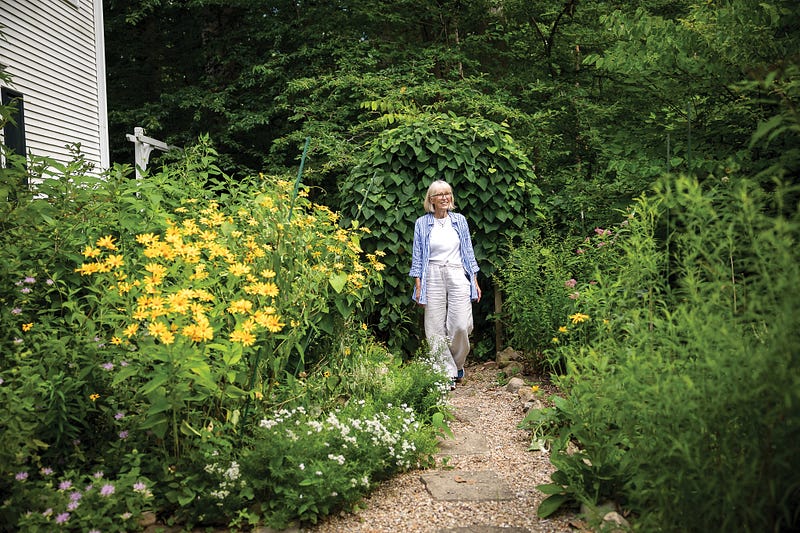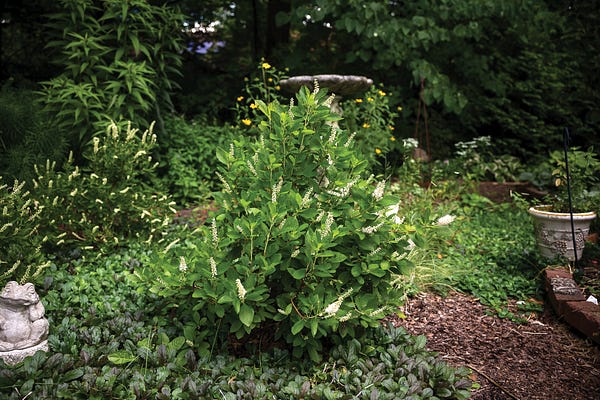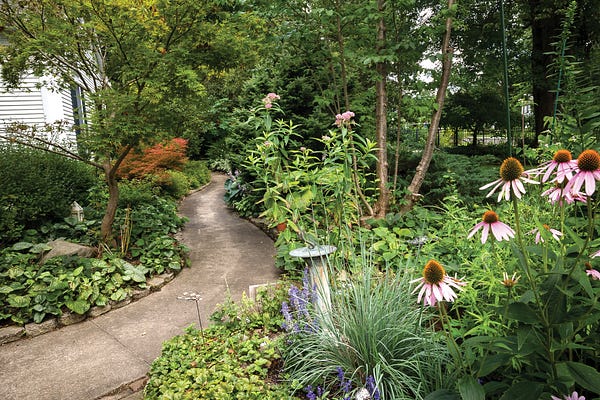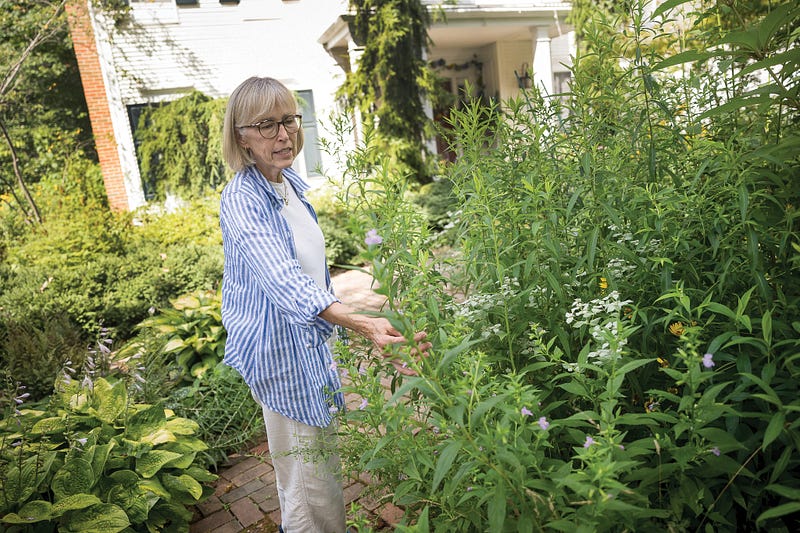Growing up in a small Midwestern town, Marcia Carsten took for granted the sights and sounds of the natural world that surrounded her. Over time, as bird calls became less frequent, insects less obvious and fireflies no longer flickered over evening lawns, she realized something was wrong. It wasn’t until a chance encounter with a naturalist that Marcia had an epiphany, leading her to embark on a journey that transformed her outdoor space into a thriving haven for native plants and wildlife. Discover how one woman’s dedication to restoring biodiversity through a Wild Back Yard is making a difference.

Marcia’s revelation came eight years ago at a Twinsburg Garden Club meeting, where Naturalist Stanley Stine shared beautiful photos of flowering native plants and the insects that depended on them for survival. Marcia realized the plants she had been growing had no function other than to be pretty, and they supported none of the incredibly important native insects, birds and other wildlife that were noticeably becoming absent from her outdoor spaces.


Marcia embarked on a journey of discovery, changing her approach to gardening and learning all she could about native insects and the habitats that support them. She became an Ohio Volunteer Pollinator Specialist, Certified Volunteer Naturalist and a Xerces Ambassador. She also joined the board of Friends of Hudson Parks, beginning a movement to educate residents and elected officials about the importance of supporting native wildlife through the creation and maintenance of native plant species.
Now pesticide-free and full of native trees, bushes, grasses and flowers, Marcia’s Wild Back Yard serves as a sanctuary for a wide variety of native creatures, including fireflies, native bees, butterflies, chipmunks, squirrels and the occasional raccoon or fox. The vernal pools she dug help with drainage and provide a habitat for native wetland plants and frogs, toads and salamanders.

To Marcia, a challenge of native gardening is finding native plants grown without the use of pesticides. She also had to learn how native plants adapt to the enriched garden environment. Through trial and error, she discovered some native plants are very adaptable to differing light or water needs. She uses native plant guides to research light, water and soil requirements, then experiments by creating similar environments in her own yard.
Marcia’s journey has resulted in a thriving habitat of native creatures and blooming plants. Her Wild Back Yard has become a vibrant and inviting space, attracting native insects, wildlife and even her human neighbors. However, the impact of Marcia’s work extends far beyond the aesthetic value of her garden. By prioritizing the protection and preservation of native wildlife and their habitats, she has demonstrated the power of individual action in restoring balance to our urban and suburban landscapes. Marcia’s story serves as a reminder that creating habitats for local wildlife is crucial to sustaining the natural world that we all rely on.
If you’re inspired by Marcia’s story, join the movement to restore biodiversity to your outdoor space through the Summit Metro Parks Grow a Wild Back Yard program! Visit bit.ly/wildbackyards for educational resources, seasonal yard tips and more, and read the full Q&A with Marcia here.
For more stories like this, check out Green Islands Magazine, a bi-monthly publication from Summit Metro Parks. Summit County residents can sign up to receive the publication at home free of charge.